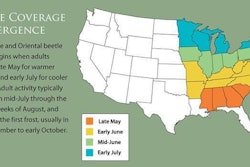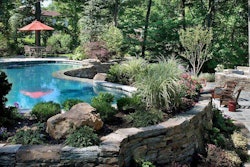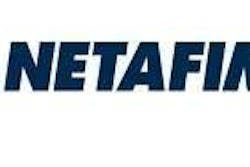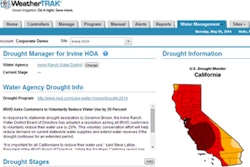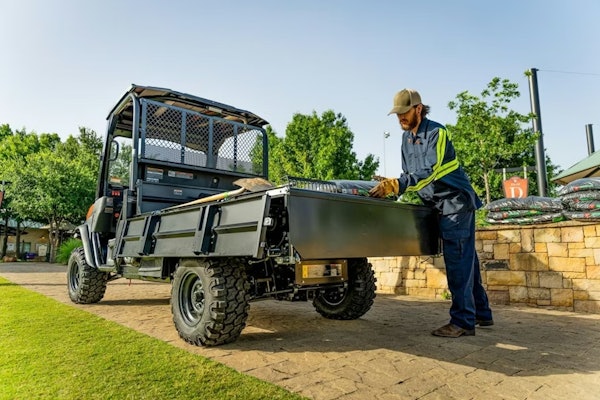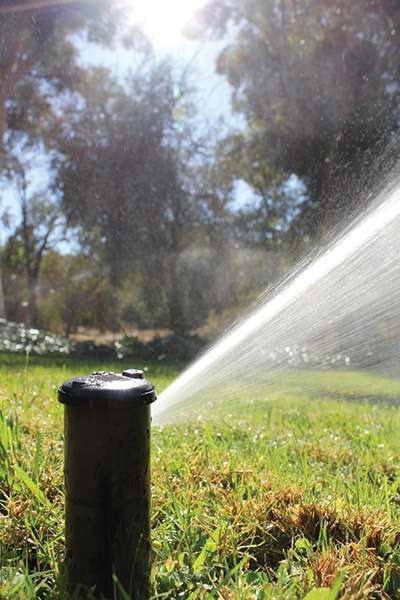 Photo: Toro
Photo: ToroWith hot summers comes an unquenchable thirst, especially when you’re talking about lawn care
However, quenching that thirst is not as easy as scheduling a smart irrigation system once or flipping on the sprinkler switch.
When it comes to proper irrigation techniques, landscapers need to follow key guidelines and routines to make sure lawns look luscious all summer long.
Checking in
First and foremost, checking every residential and commercial irrigation system is key in avoiding overwatering, as well as underwatering.
“My recommendation is to do it in the springtime when you’re firing the system back up in the colder climate markets,” says Warren Gorowitz, vice president of sustainability, Ewing Irrigation. “It’s turning on the irrigation valves, running the sprinklers to make sure it’s running as efficiently as possible and making adjustments. You might find leaks that you can fix before you get into the summertime.”
As the weather begins to change, so should irrigation systems. Plants and lawns will need different amounts of water throughout the summer, and the equipment should meet the minimum irrigation needs.
In a normal season, it’s typical for a landscaper to check irrigation systems at least once during the summer months. “If they do two, they’re really ahead of the curve,” says Jed Price, marketing manager, Rain Bird Corporation. “My recommendation would be to do two – one in the June timeframe and one in the August timeframe.”
Dealing with drought
Many states and cities will deal with different levels of drought this summer. Some states may enact watering restrictions.
Irrigation systems need to be working at their top efficiency when dealing with a drought situation. “When droughts come, that’s when you need to change your schedule and have it optimized,” Price says. “Droughts will show uneven coverage where it’s not set correctly, and the mid-season check is the No. 1 thing a landscaper can do to help with the drought.”
Because drought can be widespread, many cities and municipalities are offering incentives or exemptions for drip irrigation systems or smart controllers.
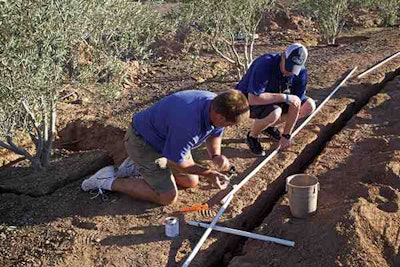 When installing irrigation equipment, paying attention to the details is key, including focusing on proper installation and using the right tools for the job. Cutting corners or rushing through the process can lead to serious problems later on.
When installing irrigation equipment, paying attention to the details is key, including focusing on proper installation and using the right tools for the job. Cutting corners or rushing through the process can lead to serious problems later on. Photo: Ewing
“Using high-efficiency sprinkler nozzles to water lawn areas can significantly reduce water use without sacrificing the turf quality,” says Peter Lackner, irrigation product marketing manager, Toro. “Similarly, for shrub areas or trees, switching to a drip irrigation system from sprays can have an equally effective impact in increasing efficiency of an irrigation system, allowing you to do more with less during a drought.”
Beyond checking irrigation systems and checking the water output, landscapers need to be checking the irrigation equipment for efficiency. Sometimes, a high-efficiency sprinkler system will have a lower precipitation rate, which means the sprinklers will run longer than a traditional nozzle. “That can come back and not be a good thing because you’re limited on how long you can run an irrigation system,” Gorowitz says.
When looking for efficient irrigation equipment, landscapers can look for items that are EPA WaterSense certified. “This means they have been third-party certified by organizations associated with the EPA to minimize over or under watering,” says Alexis Bookman, product marketing manager, Irritrol. “Plants get just the right amount of water when they need it.”
If an area is prone to drought, it’s a good idea to stay up to date on legislation, rebates and restrictions in the area. Since 2005, the Irrigation Association has hosted Smart Irrigation Month during the month of July to bring awareness to water conservation. As part of the campaign, local governments can declare July as Smart Irrigation Month. “Legislation is important to understand with what needs to get done,” Price says.
First signs of trouble
Detecting issues and problems early on can save a lawn before it’s too late. When it comes to detecting the issues, it’s all about watching the plants.
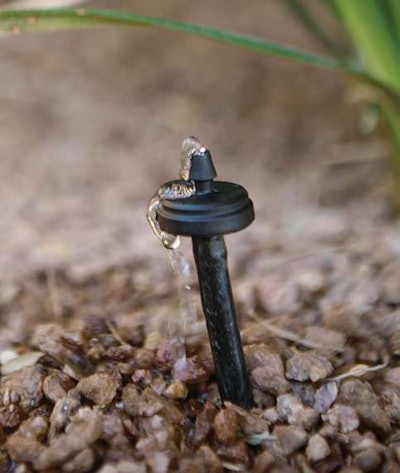 By using drip irrigation on individual trees, flower beds and container plants, landscapers can keep landscapes looking healthy, as well as reduce water waste through evaporation runoff.
By using drip irrigation on individual trees, flower beds and container plants, landscapers can keep landscapes looking healthy, as well as reduce water waste through evaporation runoff. Photo: Ewing
For instance, if a brown spot appears in the lawn, it’s normal to think the area is not getting enough water. However, there may be a few other remedies. “There could be a more practical solution that doesn’t involve using more water,” Lackner says. “Try running the sprinkler system and looking for anything suspicious around the problem spot – clogged nozzles, tilted sprinklers and sprinklers that won’t pop up are all possible culprits. If fixed, the brown spot should disappear, with little to no impact on water use.”
Brown spots can be an easy problem to detect. However, what can be more challenging is watching the plants. If there are irrigation coverage issues, there will typically be wet or dry spots or, the more obvious, dead plants. If nozzles or emitters are clogged, Gorowitz says plants will begin to die in that particular area.
However, the idea is to catch the problem before a plant may reach its untimely end, which means looking for signs of wilting.
“There are certain nozzles that can be chosen that will give you better coverage than others,” Price says. “There are even better ones in windy conditions than others. Make sure the water droplet size is optimized, which eliminates misting and gives you better coverage. All of those things will prevent different shadings in the grass, which is an indicator of poor coverage.”
Common mistakes
One of the worst mistakes a landscaper can make at the beginning of the season is “set it and forget it,” Price says.
“Sprays get 15 to 20 minutes, and rotors get 25 to 30 minutes,” Price says. “They set that, and in the early part of the season, it runs too much. The later part of the season it runs too much and in the middle part, it doesn’t run enough.”
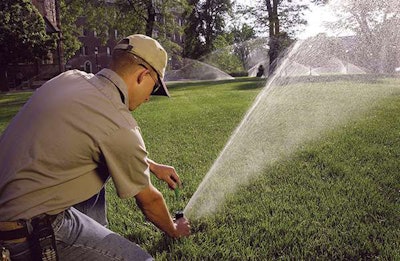 Landscapers should check client’s systems at the beginning and end of the hottest season to make sure everything is working properly. A misaligned head, clogged head or torn line can lead to thousands of gallons of wasted water.
Landscapers should check client’s systems at the beginning and end of the hottest season to make sure everything is working properly. A misaligned head, clogged head or torn line can lead to thousands of gallons of wasted water. Photo: Rain Bird
By using soil-moisture sensors and weather-based products, overwatering or underwatering can virtually be eliminated.
“The best analogy is it’s a lot like your thermostat inside your house,” Price says. “With the old thermostat, you just turned it on and cooled to whatever you set it at, where as your thermostat now, you can set programs, connect it to an alarm system and adjust it appropriately. Irrigation systems have similar products to do the same thing.”
Too much water for plants and lawns can be a bad thing. However, sometimes slightly overwatering can help a lawn stay green through the hotter season. “One of the most common methods used to ensure a green landscape throughout the summer is to overwater, erring on the side of too much water instead of too little, creating a ‘safety buffer’ of sorts,” Bookman says. “Try upgrading to a ‘smart’ sensor-based system instead, which doesn’t require a ‘buffer,’ and will continue to ensure a healthy landscape without excessive use of water.”
To truly avoid making mistakes, Gorowitz says it’s all about paying attention to the details. When installing an irrigation system, landscapers need to make sure it is glued together properly. “People try to cut corners when installing in an irrigation system,” Gorowitz says. “They might rush through things, and you will have problems down the line.”
Landscapers also need to have the right tool for the right job. For an irrigation system to run as efficiently as possible, having the right type of technology and equipment on a jobsite is vital. Equipment such as pressure regulators and check valves, which have been around for a number of years, are commonly overlooked.
“Taking advantage of some of the irrigation technology and things that have been around for a long time can help the system run as efficiently as possible,” Gorowitz says.

